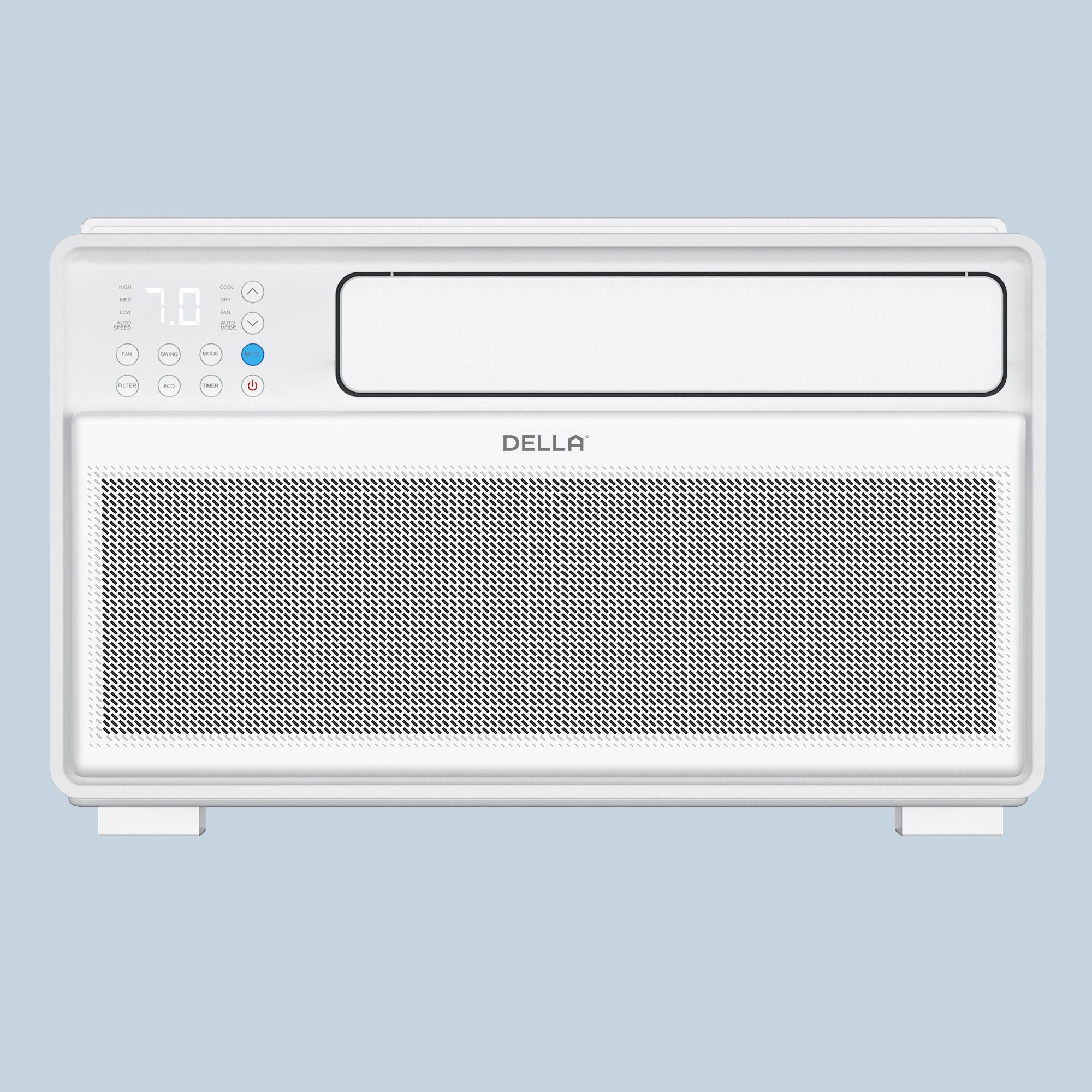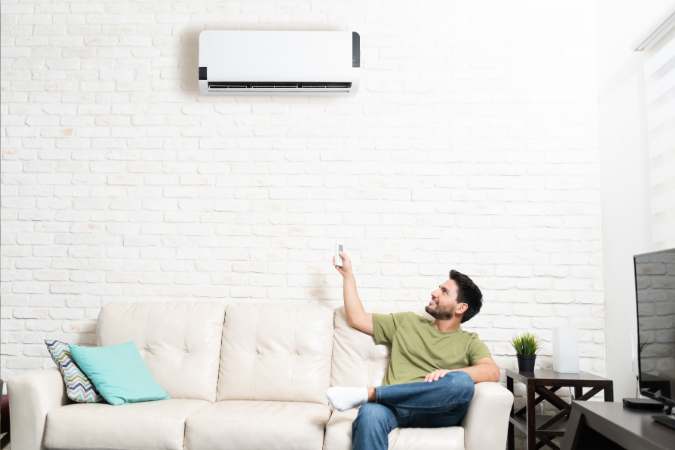When deciding between a mini split system and central air, understanding the differences is key to maximizing your comfort and minimizing energy costs. In this guide, you'll get a clear comparison of both systems—covering installation costs, efficiency, and overall performance, so you can make the best choice for your home.
Mini Split vs. Central Air Comparison Table for Quick Overview
| Feature | Mini Split System | Central Air System (HVAC) |
| Energy Efficiency | Highly efficient due to no duct losses, ideal for zoning | Less efficient; duct losses can reduce overall performance |
| Installation Cost | Higher upfront cost, especially for multi-zone setups | Lower cost if ducts are already in place |
| Electric Bill | Lower bills due to zoning and efficient operation | Higher bills; cooling entire house increases energy use |
| Zoning Control | Excellent; control temperature in individual rooms | Limited; single thermostat controls entire house |
| Space | Best for small to medium homes or specific zones | Ideal for large homes with existing ductwork |
| Maintenance | Low maintenance; no ducts to clean or inspect | Requires regular duct cleaning and inspections |
| Aesthetic Impact | Visible indoor units may affect room decoration | Hidden ducts; minimal visual impact |
| Air Quality | Basic filtration options | Superior air filtration, helps improve indoor air quality |
What are the Differences Between Mini Splits And Central Air?
When deciding between mini split systems and central air systems, it’s important to understand their key differences. Below is a comparison based on several critical points:
Energy Efficiency
-
Mini Splits: Mini splits are highly energy-efficient due to their ductless design, which eliminates energy loss through ducts. This makes them an excellent choice for reducing energy consumption and lowering electric bills. Additionally, multi-zone mini splits allow you to cool only the rooms in use, further enhancing efficiency.
-
Central Air: Central air systems are less energy-efficient because they rely on ductwork, which often leads to energy losses due to leaks or poor insulation. This can result in higher electric bills, typically 20-30% more than mini splits.
Installation and Cost
-
Mini Splits: The initial cost of mini splits can be higher, ranging from $3,000 to $10,000 or more for multi-zone systems, as it includes the outdoor unit, indoor air handlers, and installation labor. However, they are ideal for homes without existing ductwork and offer flexibility for retrofitting older homes or adding cooling to specific areas like basements.
-
Central Air: Central air systems generally have a lower upfront cost, ranging from $3,500 to $7,500 for a standard-sized home, especially if ductwork is already in place. However, installing new ductwork can significantly increase costs and complexity.
Zoning and Temperature Control
-
Mini Splits: Mini splits excel in zoning flexibility, allowing independent temperature control in each room. This is particularly useful for households with varying cooling needs in different areas.
-
Central Air: Central air systems typically operate on a single thermostat, offering less zoning flexibility. This can lead to uneven cooling, with some rooms being too cold or too warm.
Aesthetics and Space
-
Mini Splits: The indoor units of mini splits are mounted on walls or ceilings, which may not blend seamlessly with your home’s interior design. This can be a drawback for homeowners who prioritize aesthetics.
-
Central Air: Central air systems use hidden ductwork, keeping living spaces free of visible units and maintaining a clean, unobtrusive appearance.
Maintenance and Longevity
-
Mini Splits: Mini splits require minimal maintenance, typically costing $150 to $300 annually for tasks like cleaning filters and checking refrigerant levels. Their ductless design also reduces the need for extensive cleaning or repairs. They have a service life of 15 to 20 years.
-
Central Air: Central air systems require more maintenance, including regular duct cleaning and inspections. Dirty or damaged ducts can reduce efficiency and increase repair costs over time.
Air Filtration
-
Mini Splits: While mini splits have basic air filtration, they generally lack the advanced filtration capabilities of central air systems.
-
Central Air: Central air systems often feature larger and more advanced filtration systems, including support for high-efficiency filters like HEPA filters. This makes them ideal for households with allergy sufferers or pets.

Which System Is Better for You?
If you're wondering are mini splits worth it, the answer depends on your priorities. If you prioritize energy efficiency, lower electric bills, and zoning control, mini splits are the better option, especially for homes without ductwork or where targeted cooling is important.
On the other hand, central air is better suited for larger homes with existing ductwork and those needing whole-home cooling at a lower initial installation cost.
Do Mini Splits Use a Lot of Electricity?
Mini split systems are generally more energy-efficient than central air systems, which means they typically result in lower electricity bills. To give you a clearer picture, let’s compare the electricity costs of a mini split system and a central air system using the average electricity rate in California, which is around 30 cents per kilowatt-hour (kWh), as an example.
Mini Split System: A typical mini split system uses about 600 watts (0.6 kW) per hour when running. If you use the system for 8 hours a day during the summer, the daily energy consumption would be 4.8 kWh (0.6 kW x 8 hours). Over a month (30 days), this adds up to 144 kWh (4.8 kWh x 30 days). At 30 cents per kWh, the monthly electricity cost would be approximately 43.20 dollars (144 kWh x 0.30 dollars/kWh).
Central Air System: A central air system, on the other hand, uses significantly more energy. On average, a central air conditioner uses about 3,500 watts (3.5 kW) per hour. Running it for 8 hours a day results in a daily energy consumption of 28 kWh (3.5 kW x 8 hours). Over a month, this totals 840 kWh (28 kWh x 30 days). At the same electricity rate of 30 cents per kWh, the monthly cost would be around 252 dollars (840 kWh x 0.30 dollars/kWh).
As you can see, the mini split system consumes far less electricity, resulting in a monthly cost of 43.20 dollars compared to 252 dollars for the central air system. This makes mini splits a more cost-effective option for cooling, especially in regions with high electricity rates. Additionally, the ability to cool only the rooms you’re using further enhances their energy efficiency, helping you save even more on your electric bills.
Conclusion
This guide has shown that mini splits offer energy efficiency and flexible room control, while central air provides uniform cooling for larger homes. Each system has its strengths, but if you want better control over your energy use and comfort, a mini split system is hard to beat.
To start experiencing the benefits of efficient, independent room cooling, explore high-efficiency mini splits and multi-zone systems from Della. Be sure to check for any air conditioner sale opportunities, which can help you save even more on your new cooling system.
FAQs about Mini Split Air Conditioner and Central Air
-
Should I replace my central AC with mini splits?
Replacing central AC with mini splits is a smart choice if you're aiming for better energy efficiency and zoning control. Mini splits allow you to cool specific rooms without wasting energy on unused spaces. However, for larger homes where whole-house cooling is needed, central AC might still be more cost-effective.
-
Do mini splits devalue a house?
No, mini splits generally do not devalue a house. In fact, they can enhance appeal by offering energy savings and modern cooling solutions. Some buyers may prefer them for their efficiency, though others might prefer the hidden look of central air systems.
-
How many watts does a mini split use per month?
A common question homeowners have is how many watts does a mini split use. Typically, mini splits consume 600 to 1,800 watts per hour, depending on the unit’s size and settings. Over a month, this translates to approximately 500 to 1,500 kWh, depending on usage patterns and climate conditions.
Read More:
6 Best Ductless Mini Splits: 2024 Buyer's Guide
8 Steps to Install a Mini Split Air Conditioner Easily
What Size of Mini Split Air Conditioner Do I Need?
How Much Does It Cost to Install a Mini Split Unit in Garage?
Cost to Install Mini Split AC System: All You Need to Know in 2024








LEAVE A COMMENT
All comments are moderated before being published.
This site is protected by hCaptcha and the hCaptcha Privacy Policy and Terms of Service apply.